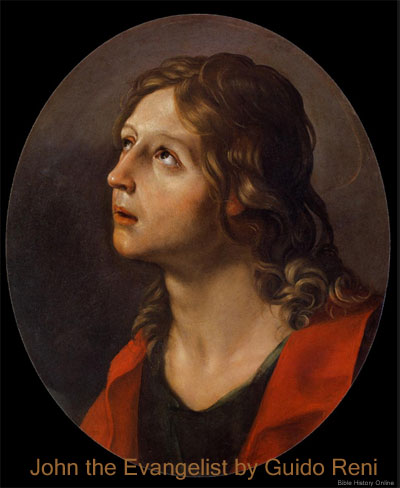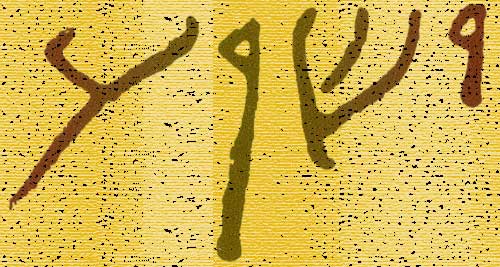20. stand--waiting in wonderful condescension and
long-suffering.
knock--
(So 5:2).
This is a further manifestation of His loving desire for the sinner's
salvation. He who is Himself "the Door," and who bids us "knock" that
it may be "opened unto" us, is first Himself to knock at the door of
our hearts. If He did not knock first, we should never come to knock at
His door. Compare
So 5:4-6,
which is plainly alluded to here; the Spirit thus in Revelation sealing
the canonicity of that mystical book. The spiritual state of the bride
there, between waking and sleeping, slow to open the door
to her divine lover, answers to that of the lukewarm Laodicea
here. "Love in regard to men emptied (humbled) God; for He does not
remain in His place and call to Himself the servant whom He loved, but
He comes down Himself to seek him, and He who is all-rich arrives at
the lodging of the pauper, and with His own voice intimates His
yearning love, and seeks a similar return, and withdraws not when
disowned, and is not impatient at insult, and when persecuted still
waits at the doors" [NICOLAUS CABASILAS in TRENCH].
my voice--He appeals to the sinner not only with His hand (His
providences) knocking, but with His voice (His word read
or heard; or rather, His Spirit inwardly applying to man's spirit the
lessons to be drawn from His providence and His word). If we refuse to
answer to His knocking at our door now, He will refuse to hear our
knocking at His door hereafter. In respect to His second coming also,
He is even now at the door, and we know not how soon He may
knock: therefore we should always be ready to open to Him
immediately.
if any man hear--for man is not compelled by irresistible force:
Christ knocks, but does not break open the door, though the
violent take heaven by the force of prayer
(Mt 11:12):
whosoever does hear, does so not of himself, but by the drawings
of God's grace
(Joh 6:44):
repentance is Christ's gift
(Ac 5:31).
He draws, not drags. The Sun of righteousness, like the natural
sun, the moment that the door is opened, pours in His light,
which could not previously find an entrance. Compare HILARY on Psalm 118:19.
I will come in to him--as I did to Zaccheus.
sup with him, and he with me--Delightful reciprocity! Compare
"dwelleth in me, and I in Him,"
Joh 6:56.
Whereas, ordinarily, the admitted guest sups with the admitter, here
the divine guest becomes Himself the host, for He is the bread of life,
and the Giver of the marriage feast. Here again He alludes to the
imagery of
So 4:16,
where the Bride invites Him to eat pleasant fruits, even as He
had first prepared a feast for her, "His fruit was sweet to my taste."
Compare the same interchange,
Joh 21:9-13,
the feast being made up of the viands that Jesus brought, and those
which the disciples brought. The consummation of this blessed
intercommunion shall be at the Marriage Supper of the Lamb, of which
the Lord's Supper is the earnest and foretaste.
JFB.
The Book of Revelation
Revelation 1:9-11 - I John, who also am your brother, and companion in tribulation, and in the kingdom and patience of Jesus Christ, was in the isle that is called Patmos, for the word of God, and for the testimony of Jesus Christ. I was in the Spirit on the Lord's day, and heard behind me a great voice, as of a trumpet, Saying, I am Alpha and Omega, the first and the last: and, What thou seest, write in a book, and send [it] unto the seven churches which are in Asia; unto Ephesus, and unto Smyrna, and unto Pergamos, and unto Thyatira, and unto Sardis, and unto Philadelphia, and unto Laodicea.
Revelation 19:11-16 - And I saw heaven opened, and behold a white horse; and he that sat upon him [was] called Faithful and True, and in righteousness he doth judge and make war. His eyes [were] as a flame of fire, and on his head [were] many crowns; and he had a name written, that no man knew, but he himself. And he [was] clothed with a vesture dipped in blood: and his name is called The Word of God. And the armies [which were] in heaven followed him upon white horses, clothed in fine linen, white and clean. And out of his mouth goeth a sharp sword, that with it he should smite the nations: and he shall rule them with a rod of iron: and he treadeth the winepress of the fierceness and wrath of Almighty God. And he hath on [his] vesture and on his thigh a name written, KING OF KINGS, AND LORD OF LORDS.
Revelation 22:18-20 For I testify unto every man that heareth the words of the prophecy of this book, If any man shall add unto these things, God shall add unto him the plagues that are written in this book: And if any man shall take away from the words of the book of this prophecy, God shall take away his part out of the book of life, and out of the holy city, and [from] the things which are written in this book. He which testifieth these things saith, Surely I come quickly. Amen. Even so, come, Lord Jesus.
Revelation in The New Testament - A Brief Overview

Painting of St. John the Evangelist by Reni - 1620
Introduction to The Book of Revelation
Brief Summary. John describes the seven churches in Asia, he records the visions that he received, and in the prophecy Jesus returns as the kinsman redeemer to claim this world as His inheritance. The final battle unfolds in a 7 year period through a series of seal, trumpet, and bowl judgements, He casts the antichrist and false prophet into the lake of fire and sets up the New Jerusalem, the new heaven and new earth for the redeemed. The book of Revelation is in harmony with the prophecies in the Old Testament especially the ones written by Ezekiel, Daniel and Zechariah.
Summary of The Book of Revelation
Author. John the apostle names himself as the one who wrote down what the Lord said through the angel. The earliest writers in the church like Justin Martyr, Irenaeus, Hippolytus, Tertullian, Clement of Alexandria and the Muritorian all credit John the apostle as author of the book of Revelation.
Date. John indicates that he was on the Island of Patmos when he received the prophecy (Revelation 1:9). According to tradition John wrote during the reign of the Emperor Domitian which would have been around 95 AD. Tradition also states that John was released the next year and was allowed to return to Ephesus. Domitian was perhaps the cruelest Emperor toward the Christians, demanding that he was to worshipped as deity, or be put to death.
Audience. John said that the prophecy was directed to the seven churches in Asia (Revelation 1:4).
Outline of the Book of Revelation
Description and Fate of False Teachers - 1:1-16
Encouragement to Believers in Christ - 1:17-25

The Name Jesus In Ancient Hebrew Text
"Yeshua" in First Century Hebrew Text. This is how the name "Jesus"
would have been written in ancient Hebrew documents. The four letters or
consonants from right to left are Yod, Shin, Vav, Ayin (Y, SH, OO, A).
Jesus is the Greek name for the Hebrew name Joshua or Y'shua which means
"The LORD or Yahweh is Salvation".
The Book of Revelation Resources
Map of the Roman Empire (14 A.D.) - This map reveals the Roman Empire during the time shortly after the birth of Jesus, in 14 AD at the time of the death of Augustus. The order which prevailed in this extensive empire, the good military roads, and the use of Koine Greek as the general language of culture throughout the area were among the factors which multiplied the rapid spread of the Gospel of Jesus Christ. (Color Map)
Map of Paul's First Missionary Journey (48 A.D.) - This map reveals the areas in Asia Minor where Paul visited in his first missionary journey. Around 48 AD, in the springtime, Paul and his companions Barnabas and Mark were sent on a mission from the church in Antioch. This would be the first of Paul's Missionary Journey's. (Color Map)
Map of Paul's Second Missionary Journey (51 A.D.) - This map reveals the areas in Asia and Greece where Paul visited in his second missionary journey. Paul re-visits a couple cities in Asia, one of which was Lystra where he was stoned and left for dead a few years earlier. He later has a vision that leads him over to Greece and Paul and his companions travel and minister in various cities in Greece (Philippi, Thessalonica, Berea, Athens and Corinth. Later Paul returns to Ephesus and finally to Caesarea and Antioch. (Color Map)
Map of Paul's Third Missionary Journey (54 A.D.) - This map reveals the areas in Asia and Greece where Paul visited in his third missionary journey. On Paul's third missionary journey he returned to the cities he had first visited on his first missionary journey. During this time he decided to remain in Ephesus for about 3 years, and this city was the main focus of his activities and an important Christian community (Acts 19). (Color Map)
Map of the New Testament World - This map reveals the "Nations" within the ancient world during the first century A.D., the time of the New Testament. The map includes the areas of Israel, Asia, Greece, and Italy. (Color Map)
Map of New Testament Greece This map reveals the cities within Greece in the ancient world during the first century A.D.,The map includes the principal cities of Greece like: Athens, Corinth, and Thessalonica, and provinces like Macedonia and Achaia. (Color Map)
Map of New Testament Asia - This map shows the cities within
Asia Minor during the first century A.D., the time of the New
Testament. The map includes the principal cities of Asia
including Tarsus, Ephesus, and Colossae, and provinces like
Galatia and Pamphilia. (Color Map)